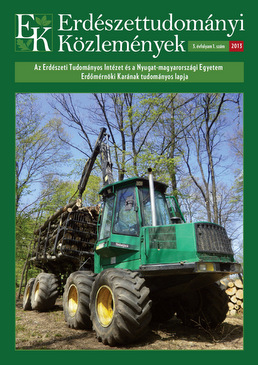Macrofungi (Basidiomycota) investigations in the Sopron Hills (Western Hungary) from forestry point of view
Ádám Folcz, Zoltán Börcsök, Bálint Dima & Norbert Frank
Correspondence
Correspondence: Folcz Ádám
Postal address: H-9400 Sopron, Bajcsy-Zsilinszky u. 4.
e-mail: folczadam[at]emk.nyme.hu
Abstract
Mycology is a rapidly developing discipline, which has strong connections to the forestry management. To discover these relationships, mycological investigation was carried out in the Sopron Mts (Western Hungary). The monitoring was started in 2010, and it has not been ended so far. Different sampling methods were applied (e.g. random field work, small and large sampling plots) in the past three fruiting periods of macrofungi to understand their applicability. Altogether 364 taxa were documented. Based on our preliminary results, the Sopron Mts is a species rich, diverse area from mycological point of view. Ecologically as well as economically, macrofungi play important role in the life of the forests and forestry managements (e.g. indicator function, nature conservation, health condition, decay of litter and dead wood, secondary source of income, etc.), and their knowledge has several future possibilities in practical use.
Keywords: check-list, monitoring, mycology, protected species, silviculture, Sopron
Open Acces
For non-commercial purposes, let others distribute and copy the article, and include in a collective work, as long as they cite the author(s) and the journal, and provided they do not alter or modify the article.
Cite this article as:
Folcz, Á., Börcsök, Z., Dima, B. & Frank, N. (2013): Macrofungi (Basidiomycota) investigations in the Sopron Hills (Western Hungary) from forestry point of view. Bulletin of Forestry Science, 3(1): 179-194. (in Hungarian)
Volume 3, Issue 1
Pages: 179-194
First published:
28 June 2013
Related content
1
More articles
by this authors
12
Related content in the Bulletin of Forestry Science*
More articles by this authors in the Bulletin of Forestry Science
(Forest reproductive materials production after the 2nd world war). Bulletin of Forestry Science, 10(1): 55-66.
* Automatically generated recommendations based on the occurrence of keywords given by authors in the titles and abstracts of other articles. For more detailed search please use the manual search.
